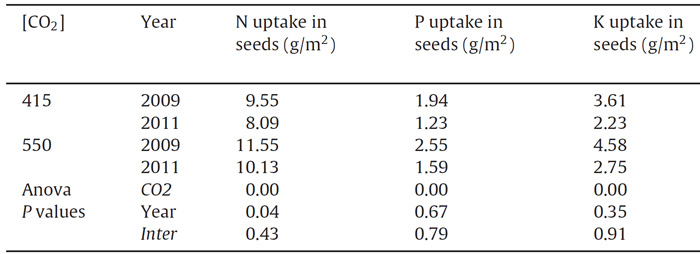| Follow @co2science |
Paper Reviewed
Hao, X., Li, P., Han, X., Norton, R.M., Lam, S.K., Zong, Y., Sun, M., Lin, E. and Gao, Z. 2016. Effects of free-air CO2 enrichment (FACE) on N, P and K uptake of soybean in northern China. Agricultural and Forest Meteorology 218: 261-266.
Noting that soybean (Glycine max) is "the world's most important grain legume and a major source of protein and oil for human and livestock consumption," Hao et al. (2016) conducted a FACE study at an experimental station at Changping, Beijing, China in two different years (2009 and 2011), where they grew soybeans at two different CO2 concentrations (415 and 550 ppm).
As indicated in the table below, this study revealed, as the nine researchers report, that "when averaged over the two years, plants grown under elevated CO2 had significantly more seed N, P and K at maturity, with an average increase of 23, 31 and 26%, respectively, when compared to the plants grown under ambient CO2." And in terms of biomass, they found that the portion of the CO2-enriched plants growing aboveground had 17% more biomass than that of the plants grown in ambient air, while belowground the CO2-enriched plants produced fully 30% more biomass than the ambient-air plants.

And so we see that atmospheric CO2 enrichment not only led to the production of more soybean biomass, it also led to the production of more nutritious soybean biomass.
Posted 2 July 2016



